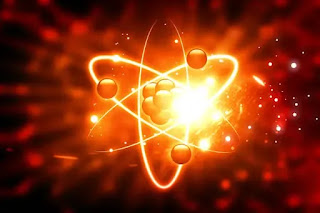Nuclear Fusion: Fusion reactions involve the combination of light atomic nuclei, typically isotopes of hydrogen (such as deuterium and tritium), to form heavier elements. This process releases an immense amount of energy according to Einstein's mass-energy equivalence equation (E=mc^2).
Hydrogen Isotopes: Deuterium and tritium, both isotopes of hydrogen, are the primary fuel sources for fusion reactions. Deuterium is abundant in seawater, while tritium can be produced in reactors by neutron interactions with lithium.
Plasma State: To achieve fusion, the fuel must be heated to extremely high temperatures and form a super-hot, ionized gas called plasma. This state of matter is similar to that found in stars.
Confinement Methods: There are several methods to achieve the required plasma conditions and keep it stable for a sufficient time to allow fusion reactions to occur. Two main approaches are magnetic confinement (as in tokamaks and stellarators) and inertial confinement (as in laser-driven fusion).
Tokamaks: Tokamaks use magnetic fields to confine the plasma in a toroidal (doughnut-shaped) chamber. Examples include the ITER project, which aims to demonstrate the feasibility of sustained fusion reactions.
Stellarators: Stellarators also use magnetic fields to confine the plasma but with a more complex magnetic configuration to achieve continuous stability. They offer the advantage of steady-state operation.
Inertial Confinement: Inertial confinement involves rapidly compressing a small fuel pellet using lasers or other methods to create the high temperature and pressure required for fusion.
Energy Output: Fusion reactions release energy in the form of high-energy neutrons and charged particles. This energy can be converted into electricity using traditional steam turbines or other technologies.
Environmental Impact: Fusion energy has the potential to provide a clean and virtually limitless energy source with minimal greenhouse gas emissions and no long-lived radioactive waste.
Research and Challenges: Despite its potential, achieving practical fusion energy has proven challenging due to the extreme conditions required for ignition and confinement. Technical hurdles include plasma stability, energy input vs. output, and material durability under harsh conditions.
Commercialization Efforts: Several countries and private companies are actively pursuing fusion energy research and development. The International Thermonuclear Experimental Reactor (ITER) in France is one of the most prominent international projects.
Road to Practical Fusion: While there has been significant progress, practical fusion power plants are not yet operational. Researchers continue to work on achieving sustained fusion reactions and developing technologies to harness fusion energy for electricity generation.
Energy Density: Fusion reactions yield a much higher energy density compared to conventional energy sources like fossil fuels. A small amount of fuel can produce a large amount of energy, making fusion a highly efficient process.
Neutron Activation: Fusion reactions produce high-energy neutrons that can activate materials in the reactor structure, making them radioactive. Developing materials that can withstand neutron irradiation and reducing radioactive waste are important challenges.
Tritium Breeding: Tritium, an essential fuel for fusion, is radioactive and has a short half-life. Fusion reactors need to generate tritium within the reactor through reactions involving lithium, ensuring a self-sustaining fuel cycle.
Ignition: Achieving ignition refers to the point where the energy produced by fusion reactions exceeds the energy input required to maintain the plasma. Ignition is a critical milestone for achieving a self-sustaining fusion reaction.
Lawson Criterion: The Lawson criterion is a key parameter that defines the conditions necessary for a sustainable fusion reaction. It combines plasma density, temperature, and energy confinement time.
Fusion Neutrons: The high-energy neutrons produced in fusion reactions can be harnessed to breed tritium, generate electricity through thermal conversion, or drive chemical reactions for hydrogen production.
Magnetic Confinement Challenges: Maintaining the stability of a high-temperature plasma within a magnetic field is a complex challenge in magnetic confinement systems. Controlling turbulence and plasma instabilities is crucial.
Inertial Confinement Challenges: In inertial confinement, achieving uniform and symmetric compression of the fuel pellet is a critical requirement. High-power laser systems and precision targeting are necessary for successful fusion ignition.
Economics and Scalability: Fusion reactors must achieve economical and practical scalability to compete with other energy sources. This includes addressing capital costs, maintenance, and fuel availability.
Spin-Off Technologies: Research in fusion energy has led to the development of technologies applicable in other fields, such as advanced materials, plasma physics, and high-power lasers.
Fusion Roadmaps: Many countries have established roadmaps and research initiatives to advance fusion energy. These include research collaborations, test facilities, and technology development milestones.
Private Sector Involvement: Private companies have also entered the fusion research arena, exploring innovative approaches to achieve practical fusion energy, often leveraging modern technologies and approaches.
Public Perception: Fusion energy has the potential to reshape global energy landscapes, but public awareness, support, and understanding are crucial for funding and advancing research efforts.
International Collaboration: Fusion energy research is often a collaborative effort involving multiple countries and institutions. International partnerships are essential for sharing knowledge, expertise, and resources.
Environmental Benefits: Fusion energy produces minimal greenhouse gas emissions and radioactive waste compared to fossil fuels and nuclear fission, making it a potentially significant solution for addressing climate change.
Fusion as a Baseload Energy Source: Fusion energy has the potential to provide a consistent and reliable baseload energy source, addressing challenges associated with intermittent renewable energy sources.
#FusionEnergy #NuclearFusion #FusionReactions #HydrogenIsotopes #PlasmaState #MagneticConfinement #Tokamaks #Stellarators #InertialConfinement #EnergyOutput #EnvironmentalImpact #ResearchChallenges #PracticalFusion #FusionReactors #TritiumBreeding #Ignition #LawsonCriterion #FusionNeutrons #MagneticConfinementChallenges #InertialConfinementChallenges #EconomicsandScalability #SpinOffTechnologies #FusionRoadmaps #PrivateSectorInvolvement #PublicPerception #InternationalCollaboration #EnvironmentalBenefits #BaseloadEnergySource






No comments:
Post a Comment